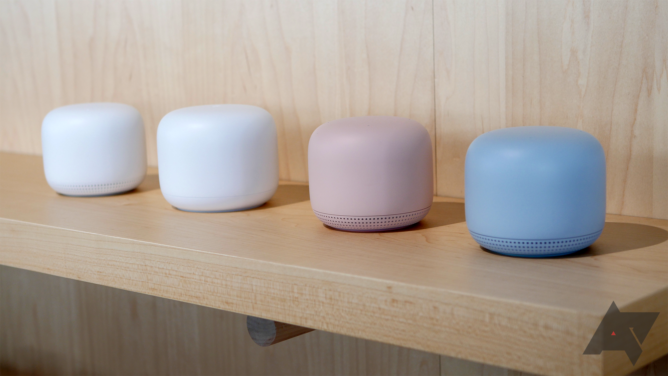Apart from Pixel phones and Nest smart home products, Google sells Wi-Fi networking devices under the Nest and Google monikers. The company launched the current-gen Nest Wifi mesh router with built-in Assistant speakers back in 2019. A year later, this was followed by the launch of a cheaper Google-branded Wifi system. Fast forward to 2022, Google's Wi-Fi networking range is showing its age, with the missing Wi-Fi 6 support being a bummer for many. Now, the folks over at 9to5Google have uncovered evidence that points to the big G working on the next generation of its router lineup under the codename "Sirocco."
Google has always used the name of winds as the codename for its networking product family — the current-gen Nest Wifi is internally known as "Mistral." There are no other details about the routers at the moment, except for the confirmation that they are under development. The next-gen Nest/Google Wifi system will likely feature Wi-Fi 6 support at the very minimum, though the company could further future-proof the offering by adding support for the Wi-Fi 6E standard.
Apart from promising faster (theoretical) speeds of up to 9.6Gbps, Wi-Fi 6 supports the WPA3 security protocol, reduces congestion, and offers greater channel width for more efficient bandwidth sharing among multiple devices. The standard is about ensuring that all devices connected to the router are delivered with data at the maximum speed and in the most efficient manner possible. The Wi-Fi 6 standard was finalized in late 2020, and while the adoption was slow initially, it has picked up pace since then and become a common feature in premium and flagship smartphones and other devices. Google's own product portfolio is in the middle of this transition, with the Pixel 6 series supporting Wi-Fi 6 while the Nest Hub (2nd gen) does not.
As for Wi-Fi 6E, it introduces a new 6GHz band with a large spectrum capacity, so all connected and compatible devices can take better advantage of the available bandwidth and there's less congestion. This relatively new standard was approved in February 2021, and its adoption is yet to pick up among consumer devices.

